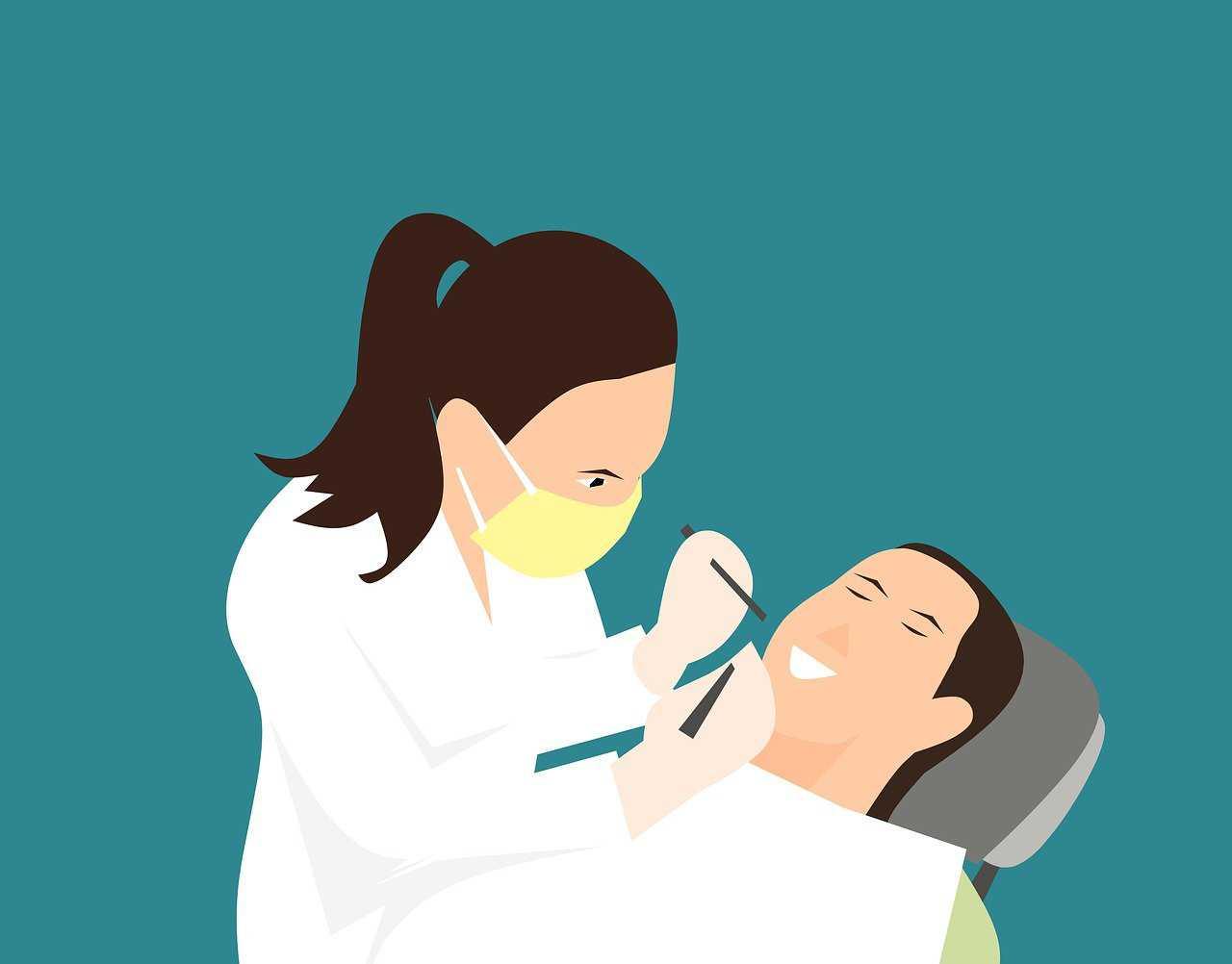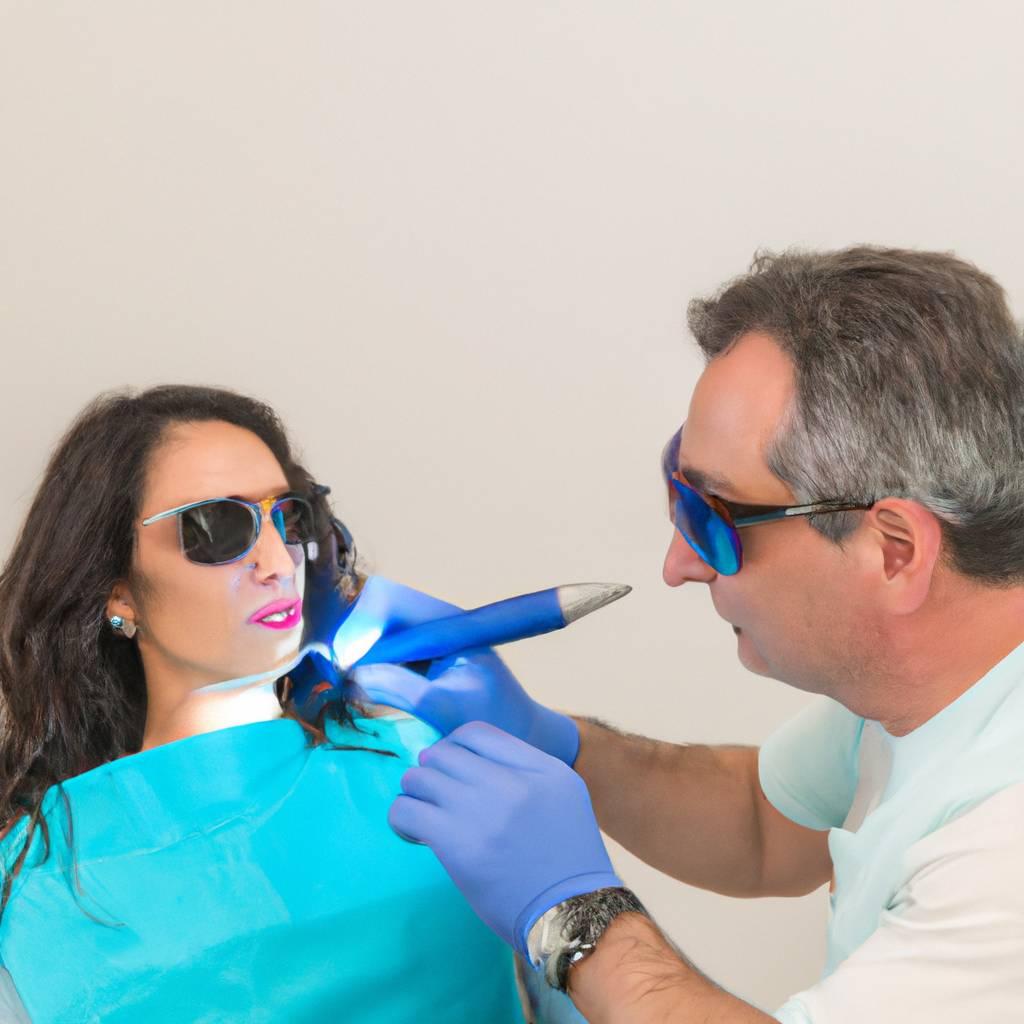Laser Assisted Periodontal Therapy (LAPT) is a modern dental procedure that is used to treat and manage periodontal disease. It utilizes laser technology to remove bacteria and infected tissue from gum pockets, promoting healthy gum tissue growth. This advanced technique offers numerous benefits over traditional treatment methods, such as reduced pain and discomfort, minimal bleeding, and faster recovery times.
What Is Laser Assisted Periodontal Therapy?
Laser-Assisted Periodontal Therapy, also known as LAPT, is a modern dental technique used for the treatment of periodontal disease. It involves the use of a laser to remove infected gum tissue, kill bacteria, and promote gum tissue regeneration. LAPT is an innovative andatinimally invasive alternative to traditional gum surgery, offering patients a faster healing time, reduced discomfort, and improved overall oral health.
LAPT utilizes a dental laser, typically a diode laser, to target and eliminate the bacteria and infected tissue in the gum pockets. The laser energy is absorbed by the pigmented bacteria, causing them to break down and be removed.
The laser also stimulates the gum tissue, promoting blood flow and aiding in regeneration. This targeted approach allows for precise treatment without harming healthy tissue. Additionally, the laser’s energy has a sterilizing effect, reducing the risk of infection.
How Does Laser Assisted Periodontal Therapy Work?
The primary goal of LAPT is to remove bacteria and infected tissue from the gum pockets, which are the spaces between the teeth and gums. The laser energy targets and destroys the harmful bacteria, promoting better oral health and preventing further damage to the gums and supporting structures.
During the LAPT procedure, the dentist or periodontist will first administer a local anesthetic to ensure a comfortable experience. The laser device is then used to gently remove the diseased tissue and bacteria, while also promoting the stimulation of healthy tissue growth.
- Laser Assisted Periodontal Therapy: A Breakthrough in Dental Care
- Benefits of Laser Assisted Periodontal Therapy
- The Laser Assisted Periodontal Therapy Proces
Overall, laser assisted periodontal therapy is a highly effective and minimally invasive treatment option for individuals with periodontal disease. By utilizing laser technology, this advanced procedure provides patients with improved oral health outcomes and a shorter recovery time compared to traditional methods.
If you are experiencing symptoms of gum disease or have been diagnosed with periodontitis, it is advisable to consult with a dental professional to determine if laser assisted periodontal therapy is a suitable treatment option for you.
Related Article: What does Laser Skin Surgery Do?
Suitability Of Laser-Assisted Periodontal Therapy
LAPT suitable for everyone? Let’s explore the factors that determine the suitability of laser assisted periodontal therapy.
1. Severity of Periodontal Disease: LAPT is most effective in treating mild to moderate cases of periodontal disease. Severe cases may require more invasive treatments such as surgery. The dentist will evaluate the extent of the disease and determine if LAPT is an appropriate option.
2. Medical Conditions: Certain medical conditions may affect the suitability of LAPT. For example, individuals with bleeding disorders or uncontrolled diabetes may not be suitable candidates for this procedure. It is important to disclose your medical history to the dentist to ensure your safety during the treatment.
3. Patient Preferences: Some individuals may have a fear of traditional dental procedures and may prefer the use of lasers. Others may value the reduced healing time and minimal discomfort associated with LAPT. Patient preferences and comfort play a significant role in determining the suitability of this therapy.
| PROS | CONS |
|---|---|
|
|
Laser Assisted Periodontal Therapy is suitable for many patients who have been diagnosed with periodontal disease. However, it may not be appropriate for individuals with certain medical conditions, such as those who are pregnant, have pacemakers, or are currently undergoing cancer treatment. It is important to consult with a dental professional to determine if LAPT is the right treatment option for your specific needs.

Laser Assisted Periodontal Therapy Cost
The cost of laser assisted periodontal therapy can vary depending on several factors. One important factor is the severity of the periodontal disease being treated. In general, the more advanced the disease, the more extensive the treatment and the higher the cost. Additionally, the geographic location and the dentist’s experience and expertise can also affect the cost.
Another factor that can influence the cost of laser assisted periodontal therapy is the number of sessions required. Some patients may only need a single session, while others may require multiple sessions to achieve the desired results. Each session can add to the overall cost of the treatment. On average, the cost of LAPT can range from $500 to $3000 per session.
| Factors Affecting the Cost of Laser Assisted Periodontal Therapy |
|---|
| Severity of periodontal disease |
| Geographic location |
| Dentist’s experience and expertise |
| Number of sessions required |
It is also worth noting that laser assisted periodontal therapy may not be covered by insurance, as it is still considered a relatively new treatment method. Therefore, patients should inquire about the cost and potential insurance coverage before undergoing the procedure.
Related Article: TMJ Surgery Cost
Recovery And Healing Process After LAPT
The recovery period following LAPT may vary from patient to patient, depending on the severity of the condition and individual healing capabilities.
The Healing Process
During the healing process, it is common to experience mild discomfort, sensitivity, and swelling in the treated area. These symptoms can be managed effectively with prescribed pain medications, anti-inflammatory drugs, and controlled home care routines. It is crucial to maintain strict oral hygiene practices and follow the dentist’s instructions regarding brushing, flossing, and rinsing. This will aid in minimizing the risk of infection and promote faster healing.
Post-Treatment Care Tips
- Adhere to a soft food diet: Following LAPT, it is recommended to consume soft foods that do not require excessive chewing. This will prevent strain on the treated area and promote healing.
- Avoid tobacco and alcohol: Smoking and alcohol consumption can hinder the healing process, delay recovery, and increase the risk of complications. It is advisable to abstain from these habits during the post-treatment phase.
- Attend follow-up appointments: Regular check-ups with your dentist are crucial to monitor the healing progress and address any concerns or complications. These appointments allow the dentist to assess the outcome of the procedure and make any necessary adjustments to the treatment plan.
Expected Recovery Time
The recovery time after LAPT can vary from a few days to a couple of weeks. In most cases, patients can resume their normal daily activities within a day or two after the treatment. However, strenuous activities, such as intense exercise or heavy lifting, should be avoided for a few days or until cleared by the dentist. It is important to note that individual recovery times may vary, and it is imperative to closely follow the post-treatment care guidelines provided by your dentist.
Potential Risks And Side Effects
One potential risk of LAPT is injury or damage to surrounding tissues. Since lasers are high energy devices, there is a small chance of unintentional harm to the gums, teeth, or other oral structures. However, it is important to note that with proper training and expertise, the risk of such damage is minimal. Dental professionals who perform LAPT undergo specialized training and take precautions to minimize any potential harm.
Pain and discomfort during or after the LAPT procedure is another possible side effect. Although laser technology is designed to be less invasive, some patients may still experience mild discomfort. This can be managed with over-the-counter pain relievers or prescribed medications, if necessary. It is important to follow the post-operative care instructions provided by the dental professional to minimize any discomfort and promote healing.
Swelling and sensitivity may occur in the treated area after LAPT. This is a normal response of the body to the laser treatment and typically subsides within a few days. In some cases, a temporary increase in gum sensitivity may occur, which can be managed with gentle oral hygiene practices and the use of desensitizing toothpaste as recommended by the dental professional. Regular follow-ups with the dentist are important to ensure proper healing and address any concerns.
